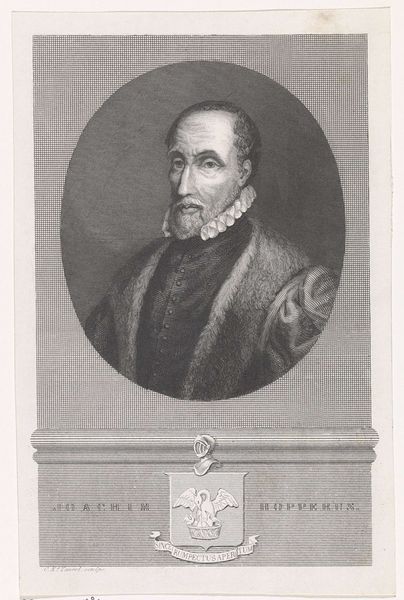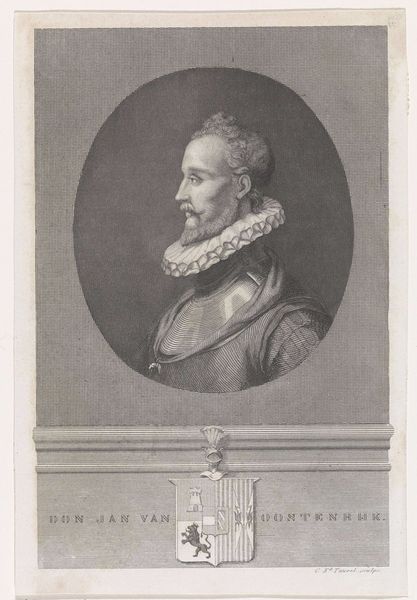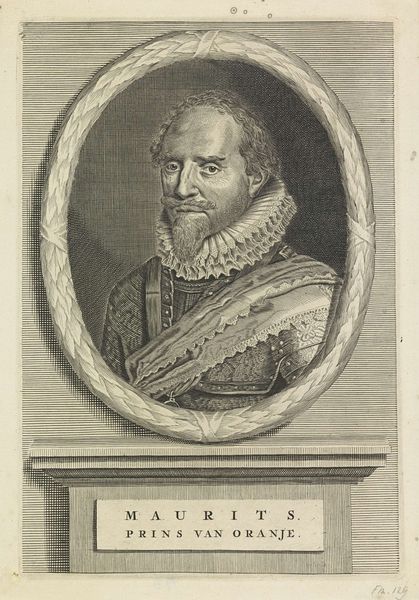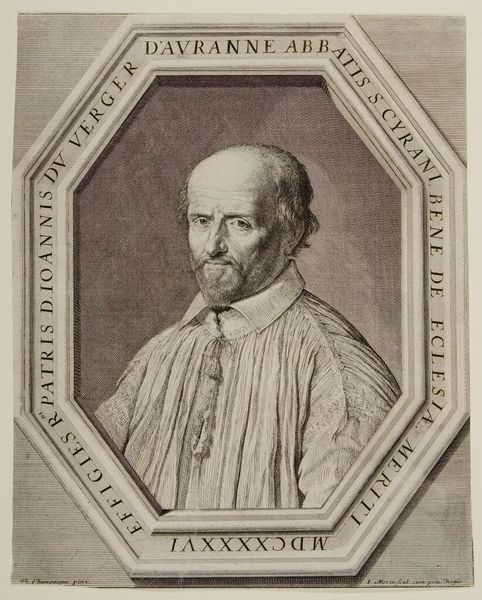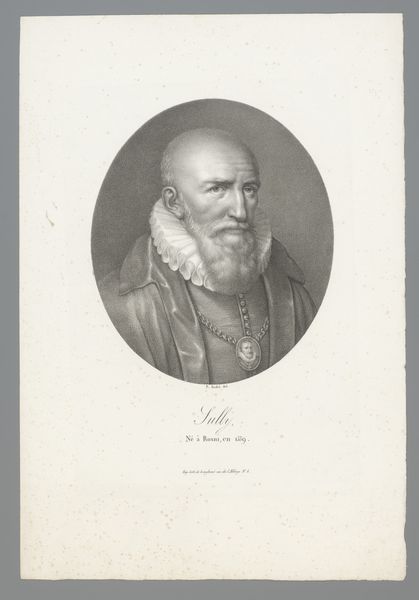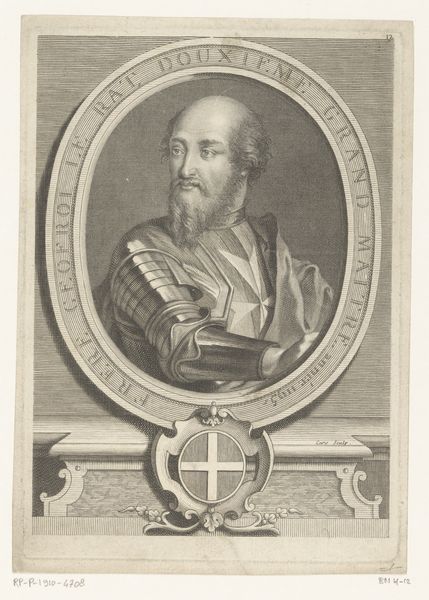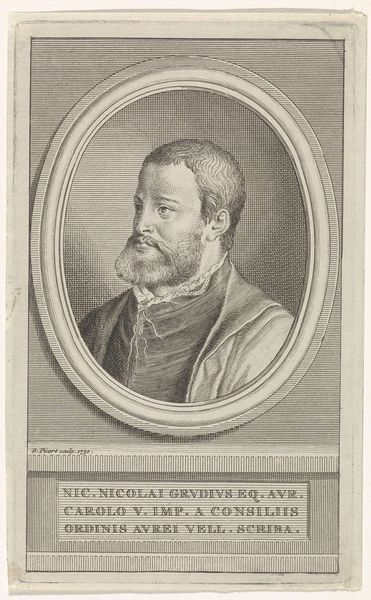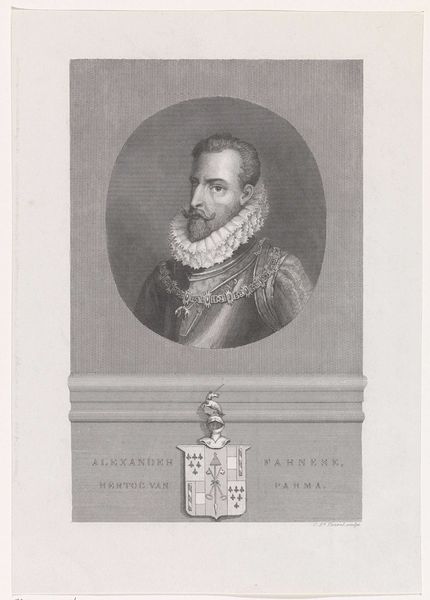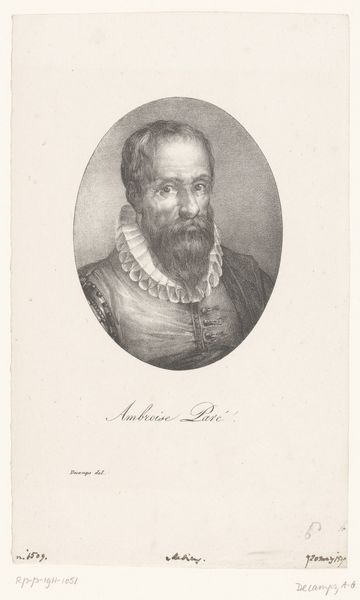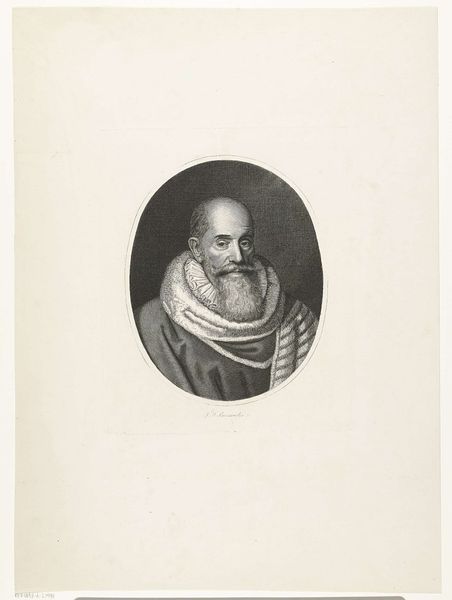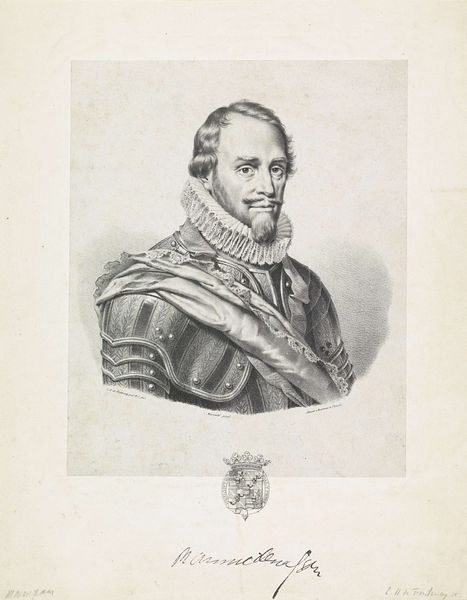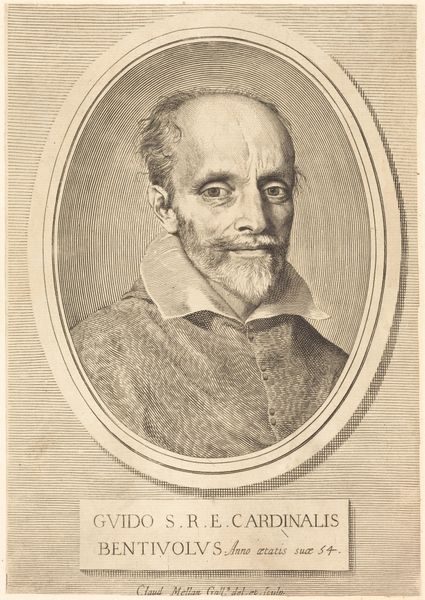
Dimensions: height 204 mm, width 134 mm
Copyright: Rijks Museum: Open Domain
Curator: Looking at this engraving, entitled "Portret van de gouverneur Diederik Sonoy", from between 1841 and 1879 and housed in the Rijksmuseum, one immediately feels the weight of history. Editor: Absolutely. The etching certainly has a stoic formality, but look how masterfully the artist uses fine lines to model light and shadow, giving an almost tactile presence to Sonoy’s ruffled collar and armour. Curator: This piece, by Edouard Taurel, represents more than just a face. Diederik Sonoy was a key figure in the Dutch Revolt against Spanish rule. As governor of Alkmaar, he led a crucial resistance. Editor: One can see this reflected in the portrait’s severe vertical lines and circular frame: the upward gaze, juxtaposed with the constricting frame of an unyielding personality. Curator: The engraving style was purposefully chosen. During this period, prints like these served a vital role in circulating imagery of historical figures. Prints enabled patriotic visual memory during state building. Editor: The linear precision creates a stark effect, a lack of nuance that amplifies the impact. Note the rigid symmetry in the gentleman's visage and how that symmetry extends throughout, creating a firm, almost harsh character study. Curator: Exactly, prints ensured broader accessibility than painted portraits, therefore bolstering visibility to political actors like Diederik Sonoy who needed that extra level of exposure. The image also tells us a story, that's why the artist inserts his shield as an element of identification and pride. Editor: Ultimately, beyond its historical significance, the artwork serves as a lesson in how visual elements create impact. Curator: And how that visual vocabulary can shape national narratives and inform future generations.
Comments
No comments
Be the first to comment and join the conversation on the ultimate creative platform.
